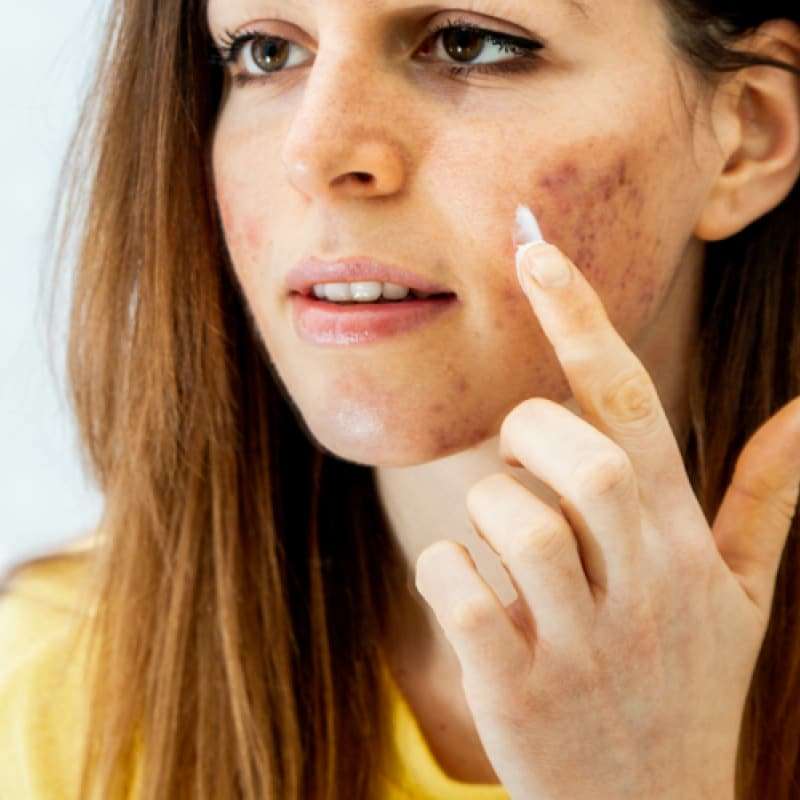
Are you concerned about the effect that sunbeds could have? Have you ever wondered whether they might make your skin worse, or perhaps cause a flare-up of existing spots?
It can be difficult to know what to do in this situation and it is not uncommon for patients to feel confused and worried when trying to determine how best to deal with their acne. If you are unsure about the effects that lymecycline and sunbeds may have on your skin then there are a few things that you should consider before deciding whether to use one. This article will explore the health relationship between lymecycline and sunbeds. To find out more read below so you can make informed decisions.
What is Lymecycline?
Acne is a disorder of the skin in which oil glands (sebaceous glands) and hair follicles become clogged with dead skin cells and oil from the skin. The clogged pores may sometimes become infected, causing redness and pus to form.
By reducing bacterial numbers in your system and bringing inflammation under control, an acne treatment allows for healing of inflamed sebaceous glands which will consequently reduce any impacted area.

Lymecycline is a tetracycline antibiotic that can be used to treat acne because it’s active against the bacteria associated with this skin condition, Propionibacterium acnes [1]. It also prevents the bacteria associated with acne from multiplying so well so quickly – this ensures that your body’s immune system can focus on fighting off infection without having to deal with excess numbers of these harmful microorganisms at the same time.
Can I Take Lymecycline and Use a Sun Bed?
Lymecycline can cause sensitivity to the sun and therefore the use of Lymecycline and sunbeds with prolonged exposure to the sun or UV should be avoided.
What are the Dangers of Sunbeds?
Tanned skin is popular in the summertime and many want to achieve that look. What many do not know, however, is that using a sunbed can cause serious damage; even with the use of sunscreen.
The UV index of sunbeds is 13, which is significantly higher than that of the sun on a summer afternoon, i.e., 8.5 [2]. On a molecular level, these UV rays break apart DNA molecules in our cells. [3]
This causes mutations in our cells, which lead to skin cancer.
These mutations often affect the p53 gene, which is responsible for preventing tumours [4]. When we use sunbeds it essentially speeds up this process so that the damage occurs faster and next our body tries to repair these mutations by either passing over them or by ridding itself of the mutated cells altogether.
What it does not always succeed in doing however is fending off these mutated cells entirely before they reproduce into cancerous tumours.

You should also know that there are other health dangers associated with using sunbeds even before getting to the point of skin cancer, such as increased risks of conjunctivitis, premature ageing, and wrinkling [5].
It is also vital to note that sunbeds do not reduce acne, instead, they result in breakouts due to the drying up of your skin.
Lymecycline and Sunlight
Taking lymecycline, albeit rarely, can cause sensitivity to UV. However, this is manageable, if you apply sun cream, and avoid too much direct sunlight and sunbeds.
Can I Buy Lymecycline Acne Treatment Online?
Yes, Lymecycline capsules for acne treatment can be purchased online from e-surgery, a reputed online pharmacy. When ordering Lymecycline capsules, make sure you check for the green GPhC logo on each website page.
Are There Any Side Effects to Lymecycline?
Yes, similar to other medications, Lymecycline can also cause side effects [6]. Common side effects include:
- Headache
- Nausea
- Stomach ache
- Diarrhoea
Though rare, you may also experience serious side effects, such as:
- Skin sensitivity
- Pale faeces
- Dark urine
- Yellowish hue in your skin or eyes (indicative of liver issues as well)
Anaphylaxis, a life-threatening allergy, is also a possibility. If you have any of the above side effects or others and feel discomfort, contact your GP immediately.
Are There Any Alternatives to Sun Beds?
There are some safer alternatives to sunbeds for tanning purposes, including:

Self-Tanning Lotions: Using self-tanning lotions instead of sunbeds is a great way to keep the sun off your skin without exposing it to any dangerous UV rays. While tanning lotions are not as effective as actual time in sunbeds, they do help to darken the outermost layer of the skin.
Spray Tans: Spray Tans can be applied in a controlled environment in a salon and can last anywhere from 5 to 10 days, depending on the amount of tanning solution used [7]. The active ingredient in this solution is dihydroxyacetone (DHA) which reacts with amino acids on the surface of the skin creating a brown colour without causing any damage to the epidermis due to its natural composition.
Self-Tanning Towelettes: These sheets are soaked with self-tanner, just unfold and swipe across your skin for an even glow.
Overall the use of Lymecycline and sunbeds is not advised as there are many health risks associated with sunbeds, including acne. If you use or are planning on using lymecycline and sunbeds together always speak to your GP for the best health advice.
Sources
- Isotretinoin and lymecycline treatments modify the skin microbiota in acne (NCBI)
- Ultraviolet emission spectra of sunbeds (NCBI)
- Quantifying Direct DNA Damage in the Basal Layer of Skin Exposed to UV Radiation from Sunbeds (NCBI)
- Targeting mutant p53 shows promise for sunscreens and skin cancer (NCBI)
- Are sunbeds safe? (NHS)
- Lymecycline: antibiotic to treat acne and bacterial infections (NHS)
- How Long Does a Spray Tan Last? 17 Tips to Make It Last (Healthline)
Further Reading
- Lymecycline (Tetralysal): an antibiotic used to treat acne (Net Doctor)
- Acne Medications That Make You More Sensitive to the Sun (Verywell Health)
- Read This Before You Go Tanning To Hide Your Acne (Facing Acne)









